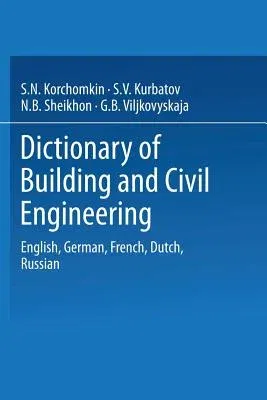In the last few decades civil engineering has undergone substantial
technological change which has, naturally, been refleded in the
terminology employed in the industry. Efforts are now being made in many
countries to bring about a systematization and unification of technical
terminology in general, and tbat of civil engineering in particular. The
publication of a multilingual didionary of civil engineering terms has
been necessitat- ed by the expansion of international cooperation and
information exchange in tbis field, as by the lack of suitable updated
bilingual didionaries. well as This Didionary contains some 14 000
English terms together with their German, French, Dutch and Russian
equivalents, which are used in the main branches of civil engineering
and relate to the basic principles of structural design and calculations
(the elasticity theory, strength of materials, soi! mechanics and other
allied technical disciplines); to buildings and installations, strudures
and their parts, building materials and prefabrications, civil
engineering tecbnology and practice, building and road construction
macbines, construdion site equipment, housing equipment and fittings
(includ ing modern systems of air conditioning); as well as to
hydrotechni- cal and irrigation constructions. The Dictionary also
includes a limited number of basic technical expressions and terms
relating to allied disciplines such as architecture and town planning,
as well as airfield, railway and underground construction. The
Dictionary does not Iist trade names of bui Iding materials, parts and
machines or the names of chemical compounds. Nor does it give adverbial,
adjective or verbal terms.


